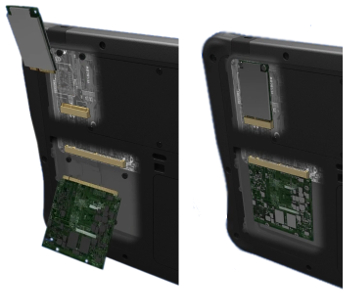
Mobile subscribers in North America and the Asia-Pacific region will be the drivers of a 13-fold growth rate in global mobile data traffic from 2012 – 2017, according to a new report from Cisco Systems.
Cisco’s latest Visual Networking Index Global Mobile Data Traffic Forecast report indicates that North American mobile subscribers will continue to consume the most data per subscriber per month of anyone else in the world. However, subscribers in the Asia-Pacific region will account for 47.1 percent of all mobile data traffic by 2017, up from 35 percent in 2012–making the Asia-Pacific region the largest in terms of data consumption.
Cisco’s annual report is widely cited every year by carriers and vendors alike as a key benchmark for measuring and predicting data traffic, and also as a data point to justify calls for network investment, traffic management technologies and more spectrum.
The report, Cisco’s sixth such one, estimates that over the next five years mobile data traffic will reach 11.2 exabytes–a billion gigabytes–per month. According to the forecast, in 2017 the average mobile subscriber worldwide will use 2 GB of data per month, up from around 200 MB in 2012, and they will consume around 10 hours of video per month, up from one hour in 2012.
Cisco’s projected growth rate is slower than it had forecasted last year. Last year Cisco said mobile data traffic will grow 18 times between 2011 and 2016 to 10.8 exabytes per month. Now Cisco thinks traffic will hit 7.4 exabytes per month in 2016.
Arielle Sumits, principal analyst for Cisco’s VNI Forecast, told FierceWireless that Cisco decided to take a more conservative approach in forecasting the growth rate of data from laptops connected to cellular networks. “It’s normal to see a little bit of the tapering in the growth rate over time,” she said.
Sumits said that Cisco “started to see this year, more than other years, a regional divergence” in mobile data traffic growth. North America, for instance, will see a dramatic increase in average mobile data usage per subscriber per month, the report predicts, going from an average of 752 MB per month in 2012 to 6 GB per month in 2017. Subscribers in Asia-Pacific will jump from using an average of 136 MB per month in 2012 to around 1.75 GB per month in 2017.
Subscribers in other regions will see similar jumps: in Western Europe subscribers will go from using 491 MB per month on average to 3.26 GB; in Latin America the growth will be from an average of 122 MB per month to 1.3 GB; in Central and Eastern Europe from 200 MB per month on average to 2.27 GB; and in the Middle East and Africa from just 73 MB per month on average to 990 MB per month.
However, the sheer volume of growth in Asia-Pacific will dwarf other regions, according to the VNI forecast. The forecast predicts that the number of mobile subscribers in the region will grow by 600 million from 2012 to 2017, up from 2.2 billion to 2.8 billion. The number of mobile devices and connections in the region will skyrocket from 3.47 billion to 5.24 billion. In North America, the growth will be much slower: The number of mobile users will climb from 288 million in 2012 to 316 million in 2017, and the number of devices and connections will jump from 459 million in 2012 to 841 million.
What will be driving this traffic growth? In North America, smartphones’ share of total data traffic will inch up slightly from 49 percent in 2012 to 52 percent in 2017, according to Cisco. Traffic from laptops will drop dramatically from 40 percent of all traffic in 2012 to just 13 percent in 2017. Tablet traffic will climb from 6.8 percent in 2012 to 28.3 percent in 2017 as shared data plans encourage more tablet adoption. Traffic from machine-to-machine applications will grow from 2.6 percent in 2012 to 6.6 percent in 2017.
In Asia-Pacific, the picture is different. There, smartphones are expected to make up the lion’s share of total data traffic over time as adoption increases and smartphone prices come down. Cisco forecasts that smartphones will make up 78 percent of all data traffic in the region in 2017, up from 46 percent in 2012. As in North America, traffic from laptops will drop, from 42 percent in 2012 to 11 percent in 2017. Tablets and M2M traffic will only make up 5.1 percent and 4.1 percent, respectively, of data traffic in the region in 2017, Cisco estimates.
One other notable aspect of the report is its take on the growth of LTE through 2017. Cisco predicts the number of 4G connections worldwide will steadily rise from 60.4 million in 2012 to 135.2 million in 2013 and up to around 992 million in 2017. That forecast is more conservative than a recent forecast from IHS iSuppli on LTE subscriber growth.
Cisco found that in 2012 only 1 percent of global connections were 4G but that 1 percent drove 14 percent of all global mobile data traffic. By 2017, 4G connections will represent 10 percent of global connections but will generate 45 percent of the data traffic. “That’s a huge jump,” said Thomas Barnett, director of service provider marketing at Cisco.
Press Release
Source: FierceWireless


















